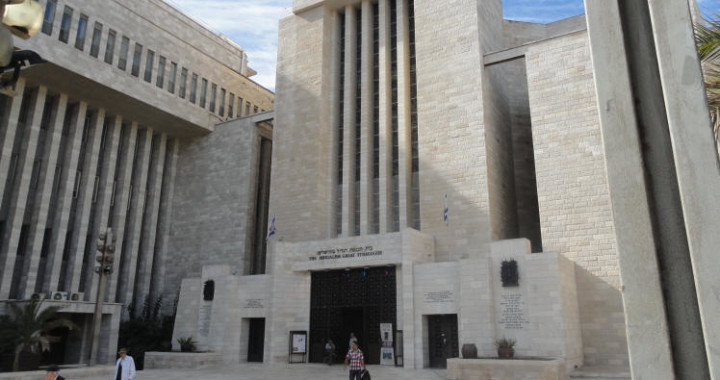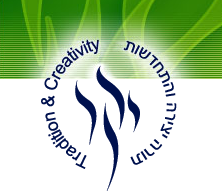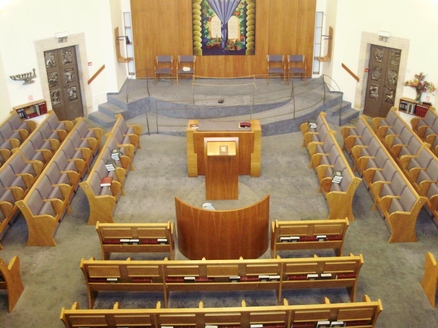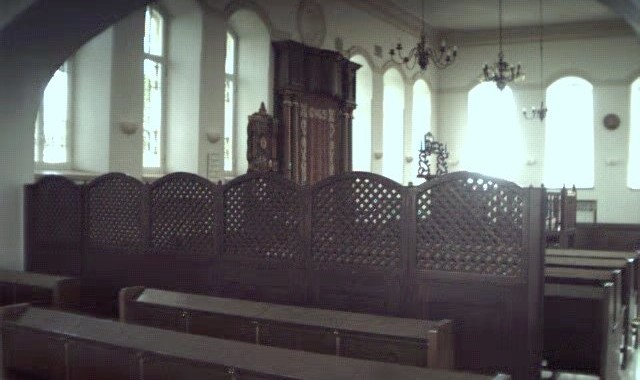Torah: Little By Little I Shall Drive Them Away
“I shall send the hornet-swarm before you and it will drive away the Hivvite, the Canaanite, and the Hittite before you. I shall not drive them away from you in a single year, let the Land become desolate and the wildlife of the field multiply against you. Little by little I shall drive them away from you, until you come fruitful and make the Land your heritage” (Ex 23:28-30)
Last week, we visited the Chicago Community Center in Lod, a site which, over the years, has been a source of friction between the different Jewish and Arab populations. Not too long ago, the Community Center had been given to the Orthodox population, who created a communal space exclusively for Jews, despite the majority (~70%) of the neighborhood being Arab Israelis. In this model, the Jews, the powerful minority, won, and the Arabs lost. But, as our guide D’ror explained, a win-lose scenario between two populations that must live together inevitably leads to a lose-lose situation. A few years ago, the new mayor recognized the need for the Center to serve all people in the neighborhood. For two years, the lower floor served for Jewish programming, and the upper floor served for Arab programming. Slowly, the floors started to become mixed, but today the classes remain separate. The goal, eventually, is that Jewish and Arab children will be able to share classes and activities together, maximizing the resources for all in a win-win situation. What they recognized, however, is they couldn’t jump to the last step immediately; the people weren’t there yet. Slowly, the walls can be lowered, and eventually, children (and their families) will be comfortable sharing space together.
There exists a fourth possibility, which we see in the verses brought above. This plan of incremental gains, expulsion and immediate settlement, makes sense as a strategy for taking over the land. Let the enemy continue to till the soil and maintain property, so that when you defeat them, you can settle seamlessly. While it may be smart military strategy, the mass expulsion of an indigenous people in order to live in their homes and till their soil (although some would claim that the land was really theirs from the start) for the sake of security, doesn’t sit well morally with me. While there are strategic locations where this might be justified, I find expulsion for entire tracts of land problematic, to say the least.
“In the Middle Ages, Saadia Gaon argued that a biblical passage should not be interpreted literally if that made a passage mean something contrary to the senses or reason (or, as we would say, science; Emunot ve-Deot, chapter 7)” (Conservative Judaism). Dr. Fritz Rothschild, former Professor of Jewish Philosophy at JTS, extends this to include morality in his assessment of Rabbinic textual interpretation. The practical implication of this is huge. If we don’t need to read Torah literally, we can search out a deeper meaning, even in morally problematic passages.
One such way of deriving deeper meaning is by viewing difficult parts of the Torah as analogy. In this case, the Hivvites, Canaanites, and Hittites are idol worshiping peoples, and the Biblical fear is that “they cause you to sin against Me, that you will worship their gods, for it will be a trap for you” (Ex. 23:33). The concern is that these people will cause the Israelites to distance themselves from the Divine presence.
In our world today, expulsion is not an option in most, if not all, cases. Therefore, we must learn how to live with each other side by side. As I saw in Lod, there are three main options: (1) We can seek to gain power over the other in our midst, ultimately resulting in a lose-lose, (2) we can split resources, staying separate but respectful, or (3) we can learn to share all resources, maximizing them to benefit everyone together. In my belief that the divine is manifested in the world through love and justice, moving from lose-lose to win-win is a moral imperative. While the verses may intimate expulsion, the deeper lesson is the opposite. We must learn how to live side by side with those different from us, and it’s only through this that we reveal the Divine in the world.
T’fillah: V’charot Imo Ha’Brit – Redemption of the Land
“You are the Lord God who chose Abram and brought him out of Ur of the Chaldees… and You made a covenant with him to give to his descendants the land of the Canaanites, Hittites, Amorites, Perizzites, Jebusites, and Girgashites. You fulfilled Your promise for You are righteous” (P’sukei D’zimra, ‘Ata hu Adonai l’vadecha’).
In our morning prayers, we recall God’s promise to Abraham to give the land of Israel to his descendants, mentioning two of the three peoples our parasha mentions as living in the land, the Canaanites and the Hittites. The Abudarham (~1340 in Seville) comments that these six nations are mentioned zecher l’maaseh bereshit, as a reminder of the creation of the world. In his typical style, the Abudarham brings biblical parallels and thoughts, while leaving it to the reader to find their own meaning. It seems to me, that just as the world was created in six days and Shabbat, there were six nations who lived in the land before the Israelites. Therefore, the Israelites are made parallel to Shabbat, tastes of the ultimate redemption of space and time, respectively. Placed in the beginning section of our prayers, where we offer praises to the Divine for wonders both natural (creation and nature) and supernatural (Exodus), the inference that the Israelite’s purpose is to make holy the land, and that this redemption is as natural as one day blending into the next, follows logically. While we may not have a moral right to exclusivity of the land of Israel today, our liturgy is an important reminder that our claim to the land is thousands of years deep, and that we have as much right as anyone to develop a national homeland in our ancestral homeland.
You can view a PDF of this Torah here.
Sam Blustin is an alumnus of the Conservative Yeshiva (2014-2015) and a current Rabbinical student at the Jewish Theological Seminary (Class of 2020). You can view more divrei Torah at www.samblustin.com or contact Sam directly at samblustin@gmail.com.





